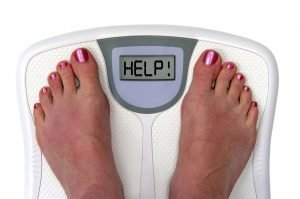Category: Blog
By Tracy S. Cummings, MD, Associate Chief Medical Officer for Clinical Excellence and Chief of Child and Adolescent Psychiatry, Lindner Center of HOPE
Medical school was an intense experience filled with mass information consumption regarding physiological health, followed by residency and fellowship focused on mental health care amounting to nine years of training to be a Child & Adolescent Psychiatrist. So much knowledge was amassed over those years, and what topic do I find myself talking about most nearly each day at work? The use of electronics (phone, tablet, computer) by teens. Now, the irony is not lost on me that most readers will be viewing this article online. Ever-present digital media is a reality in our society, and the complicated relationship with it in our lives has become clearer in recent years. Particularly, concerns regarding the impact of the use of electronics on the lives of young people with developing brains have been raised in the literature, by treatment providers, in schools, by families, and even by teens themselves. According to a 2019 Pew Research Center report, “nearly all US teens (95%) say they have access to a smartphone, and 45% say they are ‘almost constantly’ on the internet”. Taking the good with the bad, the need to recharge the proverbial battery in our youth has never been so necessary.
A 2020 estimate by the American Academy of Child and Adolescent Psychiatry noted 4-6 hours/day of screen time for 8-12-year-olds in the US and around 9 hours/day for teens. With a traditional school day lasting 7 hours, it seems the electronics are winning out on capturing the attention of our adolescents. While not all use is problematic, several studies have found associations between the amount of time spent online (and the number of social media platforms utilized) with symptoms of depression, anxiety, obesity, headaches, musculoskeletal pain, decreased levels of physical activity, and problems with sleep (delayed bedtime and/or decreased total sleep time). A growing number of teens sleep with the phone next to them and feel the need to check it multiple times a night with a sense of urgency to respond to any and all notifications immediately. It is striking how many families will report their child has sleep issues leading to irritability and trouble focusing, but often no type of boundary or limitation on phone use, particularly at night, exists. Nomophobia continues to rise globally (and this pertains to adults and youth alike).
Most tweens/teens use their devices to pass the time, and it has become the preferred method for many to interact with their peers. As fewer households have landlines, caregivers like the idea of their child being able to reach them if needed, therefore the age at which a child is receiving their own smartphone has decreased, with approximately 20% of 8-year-olds now having one. Considering the plethora of items one can stumble upon online, even as an adult, the use of the internet by children and adolescents carries significant risk. Frequently, caregivers are unaware of the viewing history on the device, and there is always the potential for exposure to violence, sexual content, substance use, cyberbullying, predators, diet culture, negative stereotypes, and misinformation.
Similar to other household rules, phone/electronic use needs to have parameters. As families consider how phone/internet use will be consumed in their homes, an AACAP Fact For Families Guideline on Screen Time suggests the following:
• For ages 6 and older, encourage healthy habits and limit activities that include screens
• Turn off all screens during family meals and outings
• Learn about and use parental controls
• Turn off screens and remove them from bedrooms 30-60min before bedtime
Healthy screen habits will need to include discussions about what is appropriate to view and share. Kids need to be taught about privacy and safety. Honest discussions about family expectations regarding accounts, passwords, and data usage is helpful (though not always liked by the teen). Looking up information and gaming together are ways to ensure valid resources and monitoring while online. The ability to use the electronic device as a tool to learn new things and connect positively with others can be encouraged and should ideally be modeled by the adults in the home. Consistency with setting this good example will establish a healthy foundation in the youth while holding the adult accountable at the same time. The Business Insider quotes analyst Ben Bajarin’s data about how iPhone users unlock their phones on average 80 times/day. For comparison, adults laugh about 15 times/day. This might be a good time for families to consider which one of those activities would bring us more joy so we can recharge together.











 Jennifer L. Farley, PsyD
Jennifer L. Farley, PsyD



